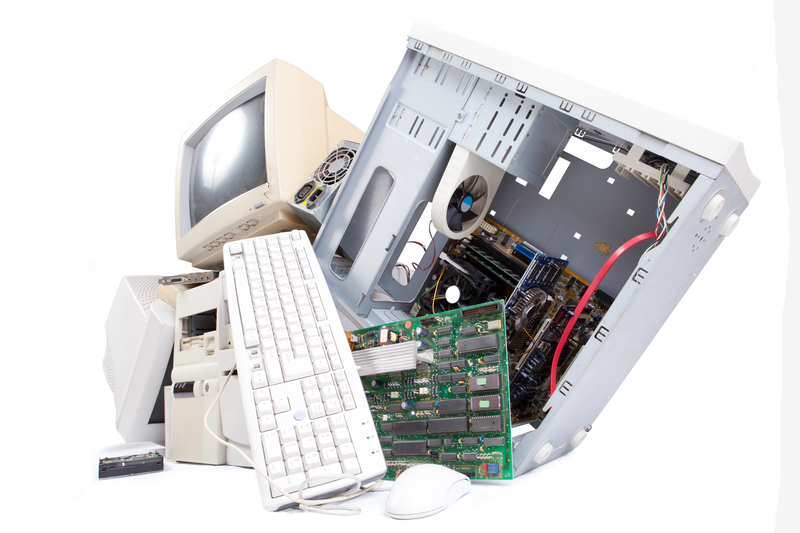Reducing Pollution Through Careful PPE Waste Disposal
The ongoing demand for personal protective equipment (PPE) has become an essential shield in protecting public health. However, managing PPE waste is now a critical environmental concern, as excessive and improper disposal increasingly threatens terrestrial and marine ecosystems worldwide. In this comprehensive guide, we will explore how careful PPE waste disposal can significantly reduce pollution, outlining actionable steps, strategies, and innovations for a cleaner planet.
Understanding the Impact of PPE Waste on Pollution
PPE, such as masks, gloves, face shields, aprons, and gowns, has proven invaluable in preventing the spread of infectious diseases. Yet, the extensive use of single-use PPE has introduced a new wave of pollution challenges, especially since the COVID-19 pandemic. PPE pollution is now a common sight in streets, waterways, and even remote landscapes, driving concern among environmentalists, policymakers, and the general public.
Types of PPE Waste That Contribute to Pollution
- Surgical and cloth masks: Often made from synthetic polymers like polypropylene, these masks can persist in the environment for decades.
- Disposable gloves: Latex, nitrile, and vinyl gloves are non-biodegradable and frequently end up littering public places.
- Protective gowns and aprons: Commonly used in medical and food industries, contributing to landfill overload if not disposed of properly.
Improper PPE disposal not only clogs landfills but also poses risks to wildlife, as animals may ingest or become entangled in discarded PPE. Microplastics derived from PPE breakdown lead to further long-term pollution, contaminating marine food webs and terrestrial environments.

Why Proper PPE Waste Management Matters
- Environmental Protection: Correct PPE disposal keeps hazardous plastics and potential contaminants out of natural ecosystems.
- Public Health: Reduces transmission risks of infectious diseases by minimizing contact with contaminated PPE.
- Compliance with Regulations: Observing proper disposal methods prevents hefty fines and supports community waste management initiatives.
Consequences of Negligence
When PPE is carelessly discarded, the impact extends beyond unsightly litter. Studies have shown that PPE waste:
- Releases toxic substances into soil and water as it degrades.
- Blocks drainage systems, increasing urban flood risks.
- Further exacerbates the plastic pollution crisis, with microplastics infiltrating the food chain.
Best Practices for PPE Waste Disposal to Reduce Pollution
Transitioning to eco-friendly PPE waste disposal is essential for pollution reduction. Here are key methods to ensure effective and responsible management:
Segregation at Source
- Households, healthcare facilities, and workplaces should separate PPE waste from regular garbage to facilitate specialized handling.
- Use color-coded and clearly labeled bins to avoid confusion and cross-contamination.
Proper Collection and Storage
- Always store used PPE in sturdy, leak-proof, and puncture-resistant bags. Tie securely before disposal.
- Avoid overfilling bins to prevent spillage during transport.
Safe Transportation to Treatment Facilities
- Transport PPE waste separately from other waste streams to treatment or incineration facilities equipped to handle infectious and plastic waste.
Use of Designated Disposal Sites
- Do not litter used masks or gloves in public places or regular bins. Utilize dedicated PPE disposal containers available in hospitals, offices, transit stations, and shopping malls.
Promoting Reusable and Biodegradable PPE Alternatives
- Encourage the use of washable, reusable masks where appropriate and safe.
- Support innovations in biodegradable PPE materials such as plant-based masks and gloves.
Waste Treatment Methods to Minimize Pollution
Incineration
Incineration is the most common method for treating infectious PPE waste. High temperatures destroy pathogens and significantly reduce waste volume. However, it requires strict controls to avoid air pollution via emissions.
Autoclaving and Sterilization
Autoclaving utilizes pressurized steam to deactivate bacteria and viruses. After sterilization, the PPE waste can be disposed of as regular waste or sent for energy recovery.
Chemical Disinfection
Chemical solutions can be used to decontaminate PPE before safe disposal or recycling, especially in healthcare settings.
Mechanical Recycling
- Advancements in recycling technologies now allow certain types of PPE, especially single-polymer items, to be mechanically recycled into new products.
Government Policies and Community Initiatives
Legislation on PPE Waste Management
- Several nations have introduced regulations mandating classification, storage, and disposal of PPE waste.
- Mandatory reporting requirements help monitor PPE waste streams and identify pollution hotspots.
Public Awareness Campaigns
- Education is a key factor in reducing PPE pollution. Community workshops, school programs, and online campaigns can inform people about the importance of responsible PPE waste disposal and its role in pollution prevention.
Community Clean-Up Drives
- Organizing clean-up events to remove discarded PPE from parks, rivers, and beaches helps reduce pollution and motivates wider participation in proper disposal practices.
The Role of Businesses in PPE Waste Pollution Reduction
Corporate Social Responsibility (CSR)
- Organizations are adopting green strategies by providing PPE disposal bins, conducting staff training, and collaborating with licensed waste management vendors.
- Some companies are piloting PPE take-back programs or funding research on biodegradable PPE alternatives.
Innovation and Product Redesign
- Researchers are developing biodegradable masks and gloves from renewable resources.
- Businesses leading in sustainable PPE production can help dramatically lower downstream pollution.
Innovative Ideas for Reducing PPE-Related Pollution
PPE Recycling Initiatives
- Emerging startups are piloting systems to collect and recycle PPE into construction materials and consumer products.
Biodegradable PPE Development
- Using natural fibers such as bamboo, hemp, or mycelium, researchers are crafting fully compostable masks and gowns.
Extended Producer Responsibility (EPR)
- This policy approach holds manufacturers accountable for the collection, transportation, and disposal of PPE products, incentivizing sustainable product design and lessening the environmental burden.
Simple Steps for Individuals to Curb PPE Pollution
- Dispose of PPE in designated bins. Avoid leaving used PPE in public spaces.
- Opt for reusable PPE where safe and viable, like cloth masks, instead of disposables.
- Cut the straps on masks and gloves before discarding them to prevent wildlife entanglement.
- Educate others, including family and colleagues, about the hazards of improper PPE waste.
- Participate in local clean-ups and advocate for improved PPE waste management in your community.
Challenges in PPE Waste Disposal and Solutions
Common Obstacles
- Lack of labeled bins or facilities for PPE collection in public areas.
- Insufficient awareness about the environmental effects of PPE disposal.
- Overwhelmed municipal waste management systems, especially in densely populated areas.
Effective Solutions
- Expanding infrastructure for PPE collection and treatment in cities and rural areas.
- Nationwide awareness campaigns about the importance of reducing pollution through careful PPE waste disposal.
- Providing incentives for the adoption of biodegradable or reusable PPE products.

The Future of PPE Waste Management and Pollution Reduction
As the world adapts to periodic health crises and the continuing need for personal protective equipment, innovations in production, usage, and disposal are imperative. Through responsive policy, community education, and scientific advancement, it is possible to break the cycle of pollution caused by careless PPE disposal.
Technologies such as artificial intelligence, blockchain for waste tracking, and molecular recycling offer promising routes for a zero-waste future in PPE management. The combined efforts of individuals, governments, and the private sector will be crucial to significantly reduce pollution via careful PPE waste management.
Conclusion: Collective Action for a Cleaner, Healthier Planet
Reducing pollution through careful PPE waste disposal is more than just a responsibility--it's a necessity for the well-being of our environment and future generations. Through adoption of best practices, support for sustainable innovations, active participation in community efforts, and policy advocacy, every individual and organization has a vital role in caring for our planet.
Let us all be mindful of how we use and dispose of PPE, driving the change towards environmental sustainability while ensuring public health. By doing so, we can protect our communities and create a lasting, positive impact on global pollution reduction.
Every discarded mask or glove has the potential to harm or to heal the environment--let's choose wisely and act responsibly.
